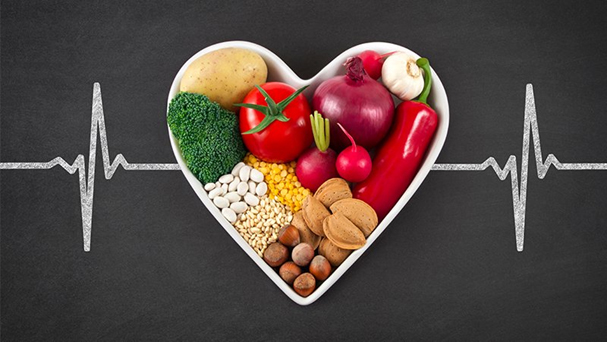
Heart disease is the leading cause of death for men, women, and people of most ethnic and racial groups in the United States. According to the Centers for Disease Control, one person dies every 34 seconds in the U.S. from cardiovascular disease.
Who is at risk?
There are several factors that increase the risk for heart disease including lifestyle, age, genetics, family history, and the presence or absence of comorbidities. About half of all Americans have at least one of the three key risk factors for heart disease: smoking, high blood pressure, and high cholesterol. While we may not be able to control our family history, age, or genetics, you can take steps to lower your risk by focusing on the factors that you can control.
How can you utilize nutrition to lower your risk for heart disease?
Focus on these four principals: 1.) Eat more fiber, 2.) swap out saturated fats for unsaturated fats, 3.) limit added sugars, 4.) limit sodium
Eat more fiber:
Fiber is naturally occurring in plant foods such as fruits, vegetables, beans, nuts, seeds, legumes, and whole grains. Fiber is a type of carbohydrate that our body cannot fully digest. The Dietary Guidelines of America recommends that we have at least 19-38 grams of fiber per day; however, the average American gets about 10-15 grams. Fiber lowers heart disease risk by helping to reduce LDL (bad) cholesterol. A high-fiber diet is also associated with increased gut microbiota diversity and lower long-term weight gain.
Swap out saturated fats for unsaturated fats:
Saturated fats are found in animal products such as meat, dairy, eggs, lard, tallow, butter, ghee, and deep-fried food. These foods do not need to be avoided completely, instead, try choosing leaner sources the majority of the time! Examples of fatty meats include bacon, sausage, hot dogs, pepperoni, baloney, salami, and high-fat cuts of red meat. Examples of full fat dairy include cream cheese, whole milk, cream, ice cream, whole milk yogurt, and full fat cheese. Leaner animal foods include poultry (chicken and turkey without skin), seafood, low fat or Greek yogurt, low fat cheese or 1% milk. Better yet, incorporating unsaturated fats into our diet has been shown to lower inflammation and improve blood cholesterol! Unsaturated fats are found in plant oils, fatty fish, nuts, nut butters and seeds.
Do eggs impact cholesterol? While egg yolks are high in cholesterol, it is saturated fatty acids that have a greater effect on our blood cholesterol levels. The American Heart Association (AHA) suggests one egg (or two egg whites) per day can be a part of a healthy diet.
Limit added sugars:
Sugars in your diet can be either naturally occurring or added. Natural sugars are those found naturally in foods such as fruit (fructose and glucose) and dairy (lactose). Added sugars are sugars put in during the food processing or at the table. Our goal should be to limit added sugars. Natural sugars are not a major threat to our health. Added sugars are mainly found in beverages, candy, baked goods, desserts, breakfast cereals, cereal bars, condiments, and sauces. The AHA recommends limiting added sugars to no more than 6% of total calories per day. For most women, that’s about 24g of sugars per day and for most men, that is about 36g per day.
Added sugars can be enjoyed in moderation. For a steadier blood sugar response, pair a food high in sugar with a food high in protein or fiber! For example, pair a sweet with a balanced meal or snack rather than eating on an empty stomach.
Limit sodium:
Excess sodium is most often found in restaurant foods, fast foods, frozen foods, condiments, sauces, and heavily processed/packaged foods. Sodium is used for flavor but also as a preservative which is why it is found in so many pre-prepared, instant foods. The AHA recommends less than 2,300mg of sodium (or 1 tsp) of sodium per day. Studies shoe the average American eats 3,400mg sodium per day. Too much sodium can lead to water retention, which can impact blood pressure. A great way to reduce sodium intake is by cooking at home. Seventy percent of our daily sodium intake comes from restaurant and prepacked foods, not the saltshaker!
Tip: Double check how much sodium is in a food product by reading the milligrams of sodium on the nutrition label. A quick guide to percent Daily Value (% DV): 5% or less is low, 20% or more is high!
Heart disease can be preventable when people adopt a healthy lifestyle which includes maintaining a healthy weight, controlling blood sugar and cholesterol levels, treating high blood pressure, not smoking, exercising regularly, and getting regular checkups with your doctor.
